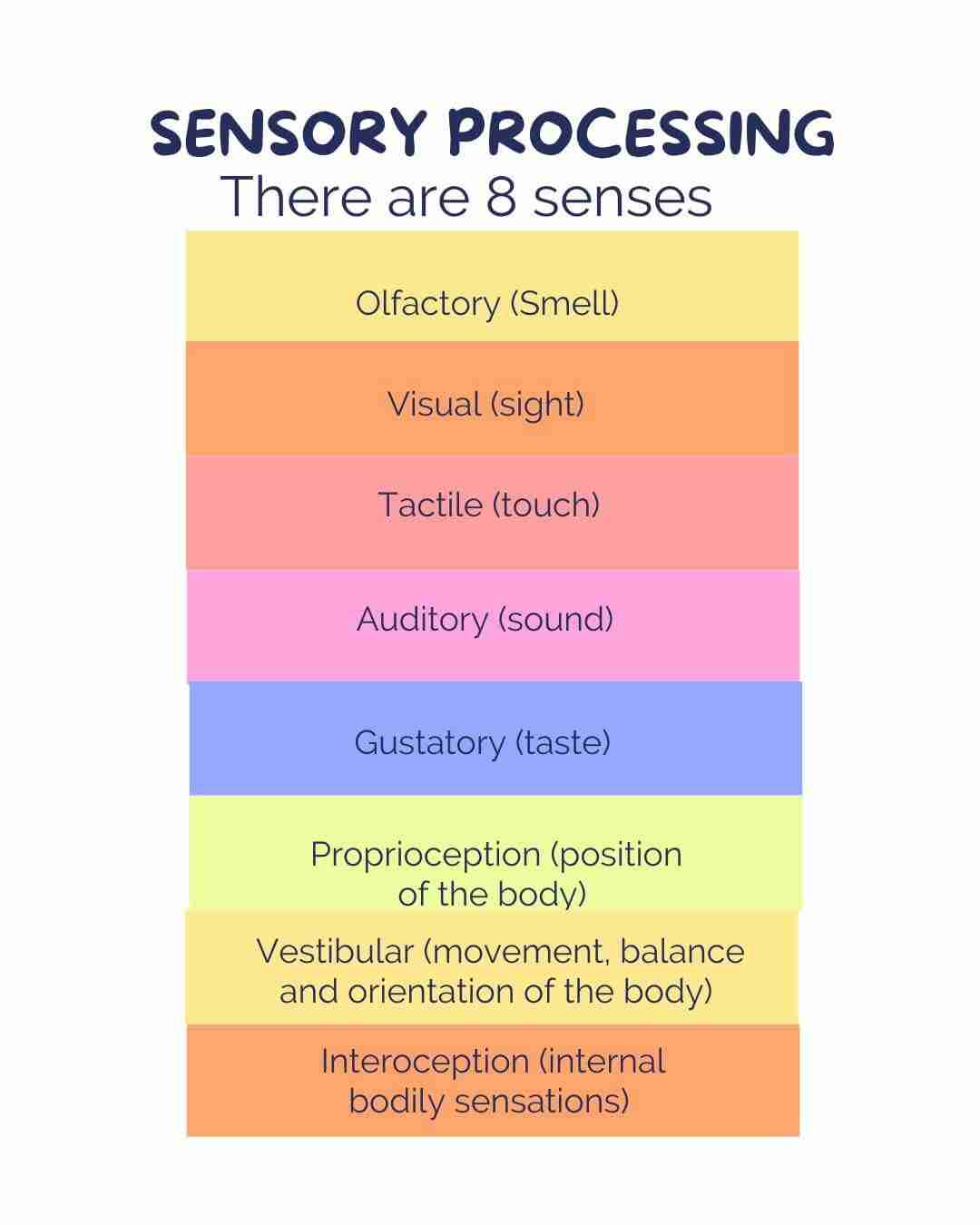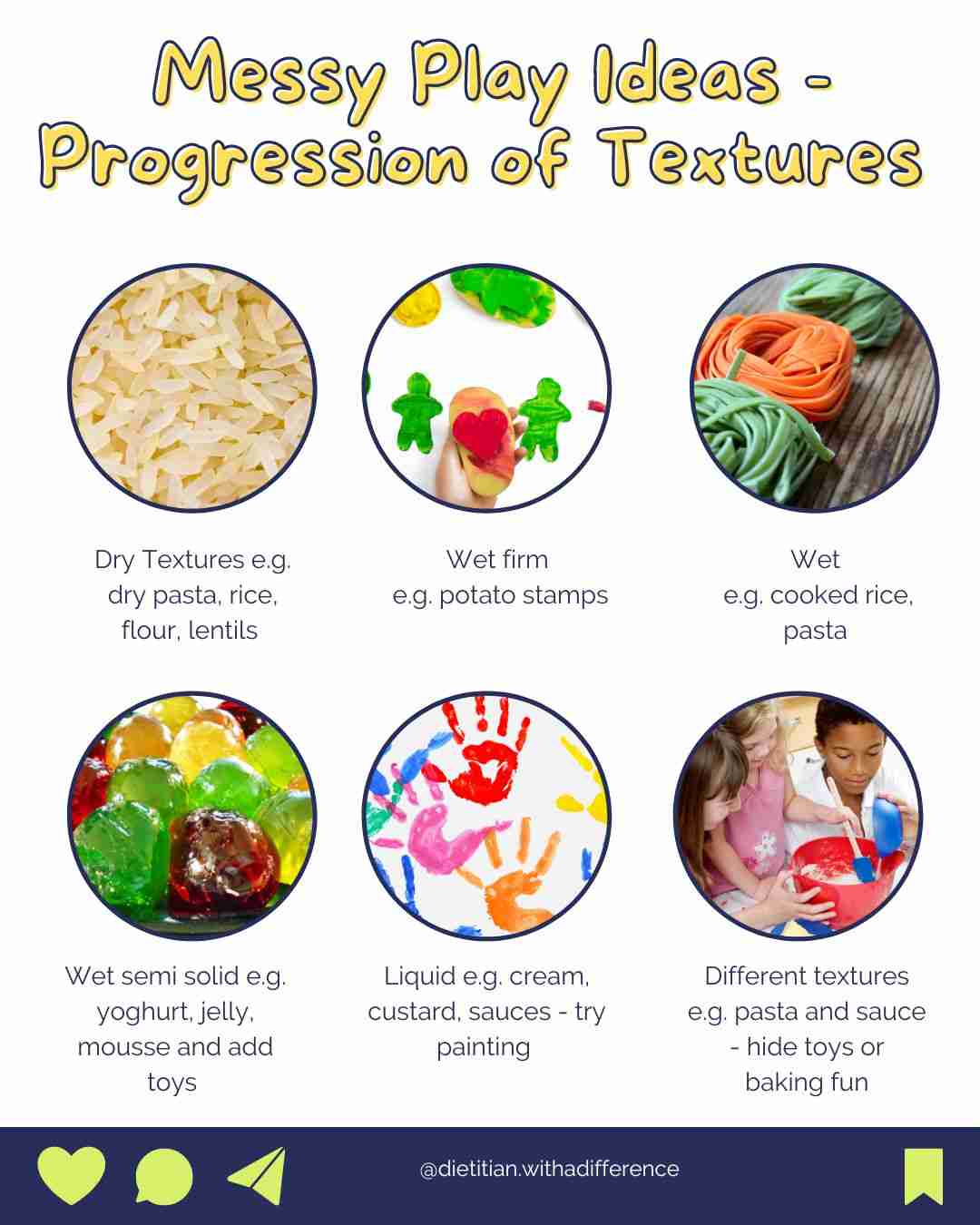Sensory Food Aversion
In this blog, we will go over what sensory food aversion is and 10 helpful approaches to help your picky eater.
Some children will refuse only a few foods whereas others will refuse most foods. Then, some children only eat one or two brands of food. You may have tried disguising it in a different pack, but they still know. 1
Picky eating is common in toddlers often know as neophobia (fear of new foods) stage.2 Some children grow out of neophobia, however, other children don’t.
What is sensory processing?
Sensory processing refers to the way the brain receives, interprets, and responds to information from the senses.
There are 8 senses:
- Olfactory (smell)
- Visual (sight)
- Tactile (touch)
- Auditory (sound)
- Gustatory (taste)
- Proprioception (position of the body)
- Vestibular (movement, balance, and orientation of the body)
- Interoception (internal bodily sensations)

First, sensory information is provided to us from external or internal stimuli. Then, this sensory information is processed. Next, the body/mind responds to the stimuli.
Some people perceive an overwhelming amount of sensory information while others perceive an underwhelming amount. Those with sensory processing difficulties may have trouble remaining calm and alert when their senses feel overpowering.
This can be referred to as a sensory modulation disorder (SMD). Children with SMD have a harder time responding to environmental stimuli appropriately and may either be sensory over-responsive (SOR) or sensory under-responsive (SUR).
A child with SOR can experience a sensation more intensely than normal. SOR may cause a child to be put into a state of “fight or flight” as a response to overstimulating situations or environments. A little can feel like a lot in children with SOR.
A child with SUR on the other hand, lacks awareness of a sensory stimuli in their environment and therefore does not respond. SUR children may come off as apathetic, as they show little to no interest or enthusiasm in response to different stimuli.3
A lot can feel like a little in children with SUR children. These children are often messy eaters. This sensory processing disorder can have an impact on a child’s eating behaviours as well and may show up in the form of food aversions.
Overall, sensory processing plays an important role in our ability to interact with and understand the world around us.
What is sensory food aversion?
A sensory food aversion is a condition in which a person experiences an intense dislike or avoidance of certain types of food or specific textures, smells, tastes, or appearances of food.
This can be due to the sensory characteristics of the food, such as its texture, taste, or smell, which may be perceived as unpleasant, overwhelming, or even painful.
Food aversions can be caused by a variety of factors, including genetics, early experiences with food, cultural or social influences, and medical conditions. Some people may have a heightened sensitivity to certain tastes, smells, or textures, while others may have a stronger aversion to foods that are associated with negative experiences e.g., trauma.
Certain medical conditions e.g. autism spectrum disorder can experience a heightened sensitivity to sensory information, resulting in sensory food aversions.4
Children who are over-responsive may avoid messy food play and foods of differing textures. They often prefer bland flavours as strong tastes can be overwhelming. To compensate for unpleasant smells or tastes, they might smell or taste an object with a pleasant taste or scent like their clothing to help regulate their nervous system. These children also prefer their food to be at a consistent temperature.
Children who are under-responsive prefer flavourful foods and drinks and may often lick inedible objects. They are messy eaters and may bite off more than they can fit in their mouth due to a lack of proprioception. Not only do they prefer more intense flavours, but they prefer hard, crunchy textures.

What could the outcome be of sensory food aversion?
Stress at mealtimes
Having had an anxious eater with sensory issues. I know how hard it can be and the constant worry about whether your child will eat the meal you lovingly prepared. It is never ending as you must feed your child every single day.
But there are ways that a dietitian can help you.
Nutrient deficiencies
I hear this all the time the GP will not help as they are growing well along the centiles. But you know as parents it is about so much more than that.
If you child will not eat a lot of food groups, they risk being nutrient deficient. I see a lot in my clinics where the children’s diet is low in iron, zinc and other vitamins.
They often need a multivitamin or mineral, but which one is best as you don’t want to give them too much either.
This is where a dietitian can help to advise you on the best option based on your child’s current dietary intake.
Could it be related to autism?
Children with autism spectrum disorder are 5 times more likely to develop feeding difficulties and they are at higher risk of nutrient deficiencies. Food variety can be limited and be based on rejecting food due to its taste, smell and texture.5 Often they have a preference for sweet or salty tastes e.g. chicken nuggets, pizza, chips, ice cream.6
Click here or on the image to download the FREE Checklist – is your child a fussy eater or a problem eater?

How can you help your child with a sensory food aversion?
Social modeling
- Keep mealtimes shorter to reduce pressure to remain at table throughout.
- Focus on the sensory properties of food e.g., color, texture, temperature.
- Let them see you eating the foods you’d like them to try. You can’t expect them to eat carrots if you don’t eat them.
- Let’s make food FUN again.
Mindful eating
- Encourage your kids to observe and identify the physical characteristics of the food- size, shape, and color. As well as food texture, temperature, scent, and flavor.
- Regular mindful eating practice can reduce anxiety around food.
- Promote curiosity and security.
Create a structure around mealtime
Time of meals are important try to have a schedule that you can follow for regular meals and snacks.
Practice good sleep hygiene
It is important for mental and physical health. Studies have shown that 80% of children with autism can be some sort of sleep difficulties 7.
Avoid over-stimulating
- Pair the new food alongside a preferred food. Start by just adding a small amount on the side, do not pressure them to eat this new food. Allow them to observe the food, touch it, smell it.
- Remember there are 32 steps to eating within the 6 categories: 1. Tolerating 2. Interacting 3. Smelling 4. Touching 5. Tasting 6. Eating.
- Refrain from combining more than one or two textures or temperatures to one meal. You can gradually increase the variety in textures, temperatures, and flavors over time.

Messy play
This can start with dry foods and gradually get wetter over time. Try to do this activity away from mealtimes. Check out my blog on messy play.
Food preparation
Get your little one to help chop ingredients or prepare and bake their favourite biscuits. Or pick a recipe from their favourite cookbook.
Find helpful coping strategies when overstimulated.
I found weighted blankets and moving around can help this worked really well for my little girl.
Increase oral stimulation throughout the day (little stimulation frequently)
- Vibrating toothbrush.
- Toys that require blowing or sucking such as:
- A whistle or recorder
- Drinking with a straw
- Blowing bubbles from bubble wand or straw
- Increase exposure to textures, temperatures, and flavors that are stimulating such as:
- Sparkling water
- Chewy candy
- Crunchy pretzels or toast and apple slices or carrots
- Flavorful foods such as ginger or herbal tea
- Something hot or spicy.
Collaborate with other health professionals
Contact your GP for more help. They maybe access feeding therapy support for you.
To summarise, a sensory food aversion is not going to disappear overnight and there is no magic wand. If a sensory food aversion is interfering with a child’s ability to maintain a balanced diet or impacting their quality of life, it may be helpful to work with a healthcare provider or a registered dietitian. To develop strategies for addressing the aversion and expanding the range of foods that can be eaten.
If you like help with your child’s restrictive eating. Please feel free to book a 10–15-minute discovery call to see how I can help you.
Thank you to Paige Courtier, Student Dietitian for helping with researching and writing the blog.

